6. Twelve Monkeys (Terry Gilliam, 1995) – La Jetée (Chris Marker, 1962)
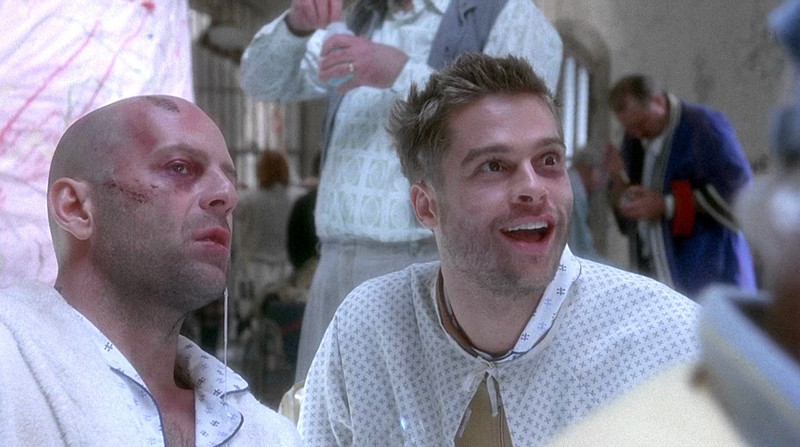
It’s hard to overstate the accomplishment of Chris Marker’s short sci-fi film about love and memory in the wake of World War III, told in still images running fast enough to mimic motion. It seems to have dropped out of the sky, rather than as some riff or reference to anything before it. It’s the rare experimental film as emotionally resonant as it is ground-breaking and as such, a remake might seem like sacrilege.
Terry Gilliam wastes no time trying to match it, but uses it as mere inspiration for his own sci-fi epic, that has a beating heart at the center of its lush visuals, thanks to a humane and erudite script from David Webb Peoples (Blade Runner, Unforgiven). Bruce Willis plays the lead, sent from the future to prevent a world-ending virus, but of course, showing up in present day with warnings from the future makes one sound crazy, not prescient.
It’s a strong enough premise that Gilliam could feel free to deploy the full breadth of idiosyncratic imagination in the production design and special effects, without losing the story’s emotional resonance. Willis is at his most vulnerable here, desperate and doubting his own memories here, even as his therapist (Madeleine Stowe) begins to believe him. To Gilliam’s credit, he layers a grim humor throughout, avoiding the ponderous tone that’s practically required of science fiction at the moment. There’s a lopsided grin to this apocalypse, and that helps it feel like its own vision, rather than some lesser copy of the original.
7. The Talented Mr. Ripley (Anthony Minghella, 1999) – Purple Noon (René Clément, 1960)
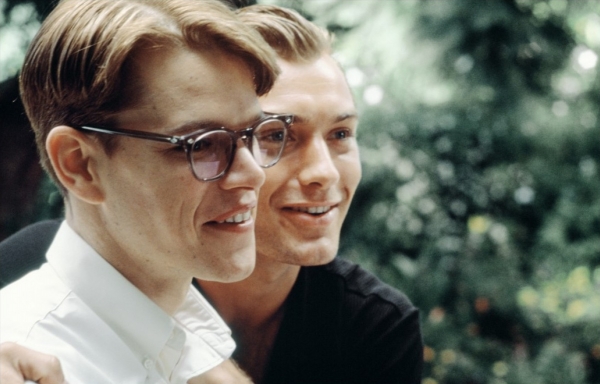
The success of any screen adaptation of Patricia Highsmith’s Ripley series of novels rests largely in the casting of that talented title character. He’s a sociopath looking to con and kill his way into the global elite, but Highsmith’s literary chops drew a cipher who intrigues and horrifies us all at once, which requires a lot of the actor in that role, as that balance isn’t struck by plot or dialogue alone.
The thousand watt cool of Alain Deon manages that feat in the first adaption, directed by René Clément in 1960. Clément maintains an icy reserve to the proceedings, as Deon’s Ripley kills the rich playboy he was supposed to escort back to the States, and assumes his identity. The murder on the boat is a showpiece of action framing, with the dark sapphire waters filmed like a foaming mouth about to swallow the boat and both men in its maw. Clément invites us to witness the step-by-step process of forging passports and devising alibis, relying exclusively on Deon’s charisma to keep us interested. And it ends with a wry, bitter note that maintains the spirit of the novel.
A few decades later, Anthony Minghella improved on the feat with the help of Matt Damon in the title role. By 1999, Damon was a full-fledged movie star with an Oscar for writing his own breakout role as the blue-collar genius in Good Will Hunting. Damon radiated a Nice White Bro energy that charmed audiences. Which is precisely why his casting as Ripley was a stroke of genius. Damon’s presence disarmed audiences into thinking here’s another kid from the wrong side of the tracks about to work his way into the 1%, only to discover he’s a murderous con artist.
The rest of the cast offers a ridiculous array of star power, including Jude Law, Gwyneth Paltrow, Cate Blanchette, Philip Seymour Hoffman, and Philip Baker Hall. Minghella amps up the homoerotic tension between Damon and Law’s playboy, and lets the rest of cast make those stuffy, shallow rich folks into people that don’t quite deserve what Ripley’s dishing out. Minghella appreciates the source material enough to avoid making Damon more sympathetic, understanding just how to serve this sour, sophisticated cocktail.
8. The Departed (Martin Scorsese, 2006) – Infernal Affairs (Andrew Lau & Alan Mak, 2002)
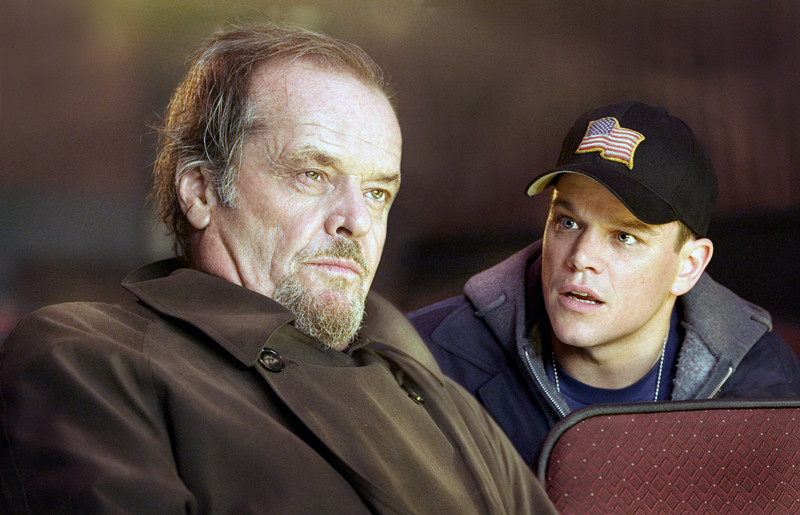
The fact that Martin Scorsese eventually scored his long overdue directing Oscar with this lurid remix of a Hong Kong cop thriller is only another data point that the award gauges nothing but the odd, fickle tastes of the Oscar voter. This isn’t to say that Scorsese’s work here doesn’t dazzle, but it feels like a loose, smirking riff on the material, deeply satisfying as a pulp exercise that shrinks in light of the masterpieces before or after it.
The premise seems pedestrian, with a cop going undercover in a Triad gang to help discover the dirty cop on the gang’s payroll. But it transcends that logline by the less than obvious choice to hide neither identity of the undercover cop nor the dirty one, creating dueling narratives as both attempt to find each other before being discovered themselves. It’s expertly made, avoiding the gonzo excess that inspired Hollywood to put a generation of Hong Kong auteurs on the payroll, with varying results.
The remake moves the action to south Boston, where it becomes an unofficial biopic of the notorious gangster Whitey Bulger. Scorsese assembles an all-star gang with Matt Damon deploying his considerable smarm as the dirty cop and Leonardo DiCaprio, a rangy bundle of nerves as the undercover one. What gets lost in the raves for this is how ably Marty uses every actor, from knowing Mark Wahlberg excels as a meat-head quip machine, Alec Baldwin as a blowhard boss and Jack Nicholson as the silk-robed, dildo wielding crime king that nearly waltzes off with the entire picture, if Damon and DiCaprio weren’t working overtime to take the movie for themselves. It’s a movie of delightful one-upsmanship, that’s lets the original be the respectable version, even if this walked off with the Oscar for Best Picture as well.
9. Sorcerer (William Friedkin, 1977) – Wages of Fear (Henri-Georges Clouzot, 1953)
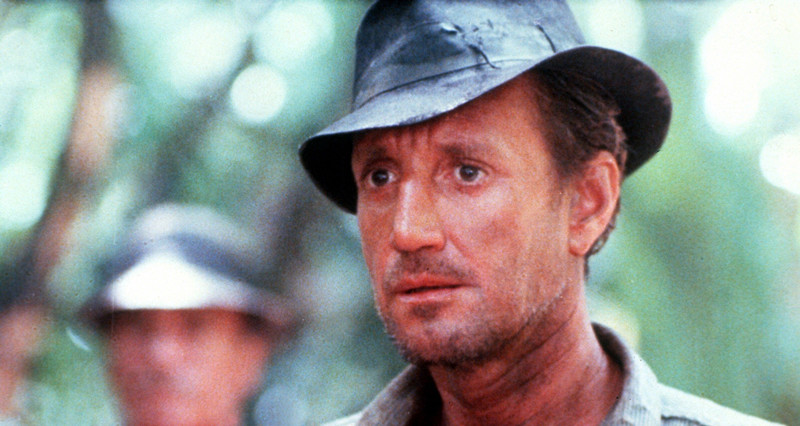
Hollywood has a long history of taking lean, mean genre exercises from around the world, and bloating them up with spectacle, side plots and forced happy endings until they lose whatever appeal that caught the studio’s attention. Sorcerer is the rare exception, as the notorious hit maker William Friedkin discovered an existential epic lurking inside a juicy French thriller made by a notorious hit maker from a different era, Henri-Georges Clouzot.
At its center, Clouzot’s Wages of Fear has an unbeatable idea: a group of desperate men drive trucks full of nitroglycerine through an unpaved jungle road in South America to fight a fire in an American oil well. Every bump could make their vehicles go boom, but they’re making a small fortune to do it. It’s a relentless ride that’s a classic in its own right, and was “unofficially” remade in the US as 1957’s Violent Road, which only proved it still needed a master to orchestrate the idea into something special.
Friedkin returned to the original novel and envisioned a quick and dirty picture between bigger projects. But soon, the movie grew in his imagination and in battles with cast and crew until two studios had to help shoulder the cost. The result was a tremendous flop that opened right around the time Star Wars shifted the industry’s paradigm, and its failure hurried the end of the auteur era of the 70s. But over time, Sorcerer enjoyed a second life as an underappreciated masterpiece.
The reimagining expanded the scope of the story so that each driver arrived from their own movie, carrying their own desperate rationales to get behind the wheel. The movie’s screenwriter Walon Green (The Wild Bunch) suggested Friedkin read One Hundred Years of Solitude by Gabriel García Márquez in preparation, which created an offbeat structure that would have felt meandering if both Green and Friedkin weren’t such gifted mechanics of suspense.
Roy Schneider plays the lead, continuing his track record of no one’s first choice for a role only to make it obvious he was the only man for it. Sorcerer eventually evolves into a meditation of fate, and the Sisyphean struggle to avoid it. The result was an action masterwork with plenty under the hood to warrant its running time and yes, even its costs.
10. Some Like It Hot (Billy Wilder, 1959) – Fanfare of Love (Richard Pottier, 1935)
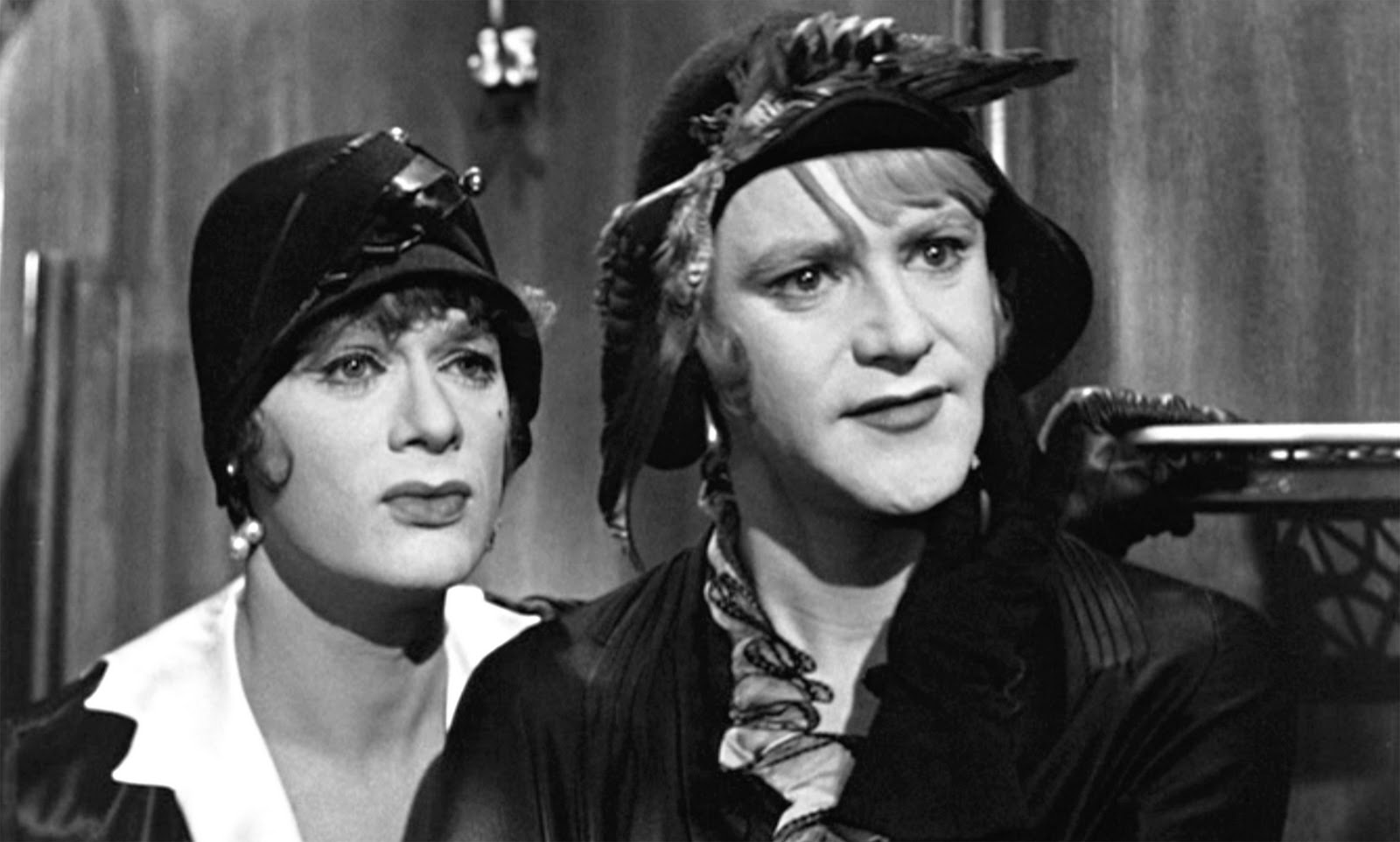
Perhaps no Hollywood director did more with less, than Billy Wilder accomplished remaking a lackluster French comedy about a pair of struggling musicians who dress up as women to join an all-female band. The source material hardly seems capable of being a comic masterpiece, but Wilder, along with his longtime writing partner, I.A. L. Diamond proved that execution can work miracles.
The French original was remade again in Germany in 1951, but Wilder had little affection for either version, although he clearly saw the potential. In one of the savviest changes from the source material, Wilder and Diamond shifted the action to the 1920s, so those two struggling musicians would be working at a speakeasy and witness a mob hit inspired by the real-life St. Valentine’s Day Massacre. This gives the movie a more powerful story engine so they aren’t just dressing up as women for a gig, they’re hiding out from the mob.
This allows our two leads (Jack Lemmon and Tony Curtis) to take increasingly ridiculous measures to maintain the façade that a mere paycheck would never warrant. But it wasn’t merely a matter of some script rewrites. After over two decades as a screenwriter and director, Wilder knew how to make the most of each gag and performance, including one of Marilyn Monroe’s finest hours, and even the limited range of George Raft, a frequent heavy in 30s gangster classics.
The movie obliterated any memory of the French and German versions to serve as an example of the finest Hollywood filmmaking, which in true American fashion, was done by a pair of immigrants using materials from another country to make something of universal appeal that still works today.